TOPIC 4: CLASSIFICATION OF LIVING THINGS | BIOLOGY FORM 1
CLASSIFICATION OF LIVING THINGS
CLASSIFICATION OF LIVING THINGS
Likewise, in the shop, laboratory or pharmacy items are sorted and placed on the basis of their similarities.
CLASSIFICATION OF LIVING THINGS
Sort out the above organisms into plants and animals
Classify the animals on the following basis
Those with wings and those without wings
Those with tails and those without tails
Those with antennae and those without antennae
Terrestrial and aquatic organisms
CLASSIFICATION OF LIVING THINGS
Classification makes the study of living things easy
Classification makes communication easy among biologists from different parts of the world
It provides good organized system in which a newly identified organism can be easily fitted in future.
It makes it easier to identify organisms
CLASSIFICATION OF LIVING THINGS
It can be used to predict characteristics that are present in the members of the same group.
Artificial classification
Natural classification
practicalpurpose with an emphasis on convenience and simplicity.
CLASSIFICATION OF LIVING THINGS
relationships suchas the fact that snakes have backbones and earthworms do nothave.
than with worms.
CLASSIFICATION OF LIVING THINGS
It considers many features in commonincluding internal as well as external features.
CLASSIFICATION OF LIVING THINGS
the same basic pattern and similar bone arrangement, i.e. homologous.
CLASSIFICATION OF LIVING THINGS
These organisms cannot be placed in the same group since they are different in many ways.
CLASSIFICATION OF LIVING THINGS
It is easy to classify organisms since it is based on few observable characteristics.
CLASSIFICATION OF LIVING THINGS
It does not take much time to classify organisms based on this system (not time consuming).
It does not need expertise (even a layman can do).
It is relatively stable i.e. not easily changing from time to time.
It tends to place closely related organisms into different groups instead of being grouped together
e.g. a bat can be placed in a group of birds instead of mammals.
Different or unrelated organisms may be placed in the same group e.g. bats placed in a group of birds, worms placed with snakes in the same group
The system does not provide enough information about its members.
CLASSIFICATION OF LIVING THINGS
It is difficult to incorporate additional information.
Closely related organisms are placed in the same group.
It reflects evolutionary relationships.
Unrelated organisms cannot be placed in the same group.
It makes it easy to incorporate additional information.
It is difficult since it considers many features.
It requires expertise i.e. more knowledge about an organism.
It is time consuming.
It is relatively unstable i.e. it changes from time to time.
CLASSIFICATION OF LIVING THINGS
It is more expensive since more data are required.
| Artificial classification | Natural classification |
| (i) Considers few features in common | Considers many features in common |
| (ii) Does not reflect on evolutionary relationships | Reflects on evolutionary relationships |
| (iii) It is easy to classify | It is difficult to classify |
| (iv) Not time consuming | It is time consuming |
| (v) Does not require expertise | Requires expertise |
| (vi) New information cannot be added | New information can be added. |
For example, euglena is capable of feeding like an animal and locomote like an animal.
CLASSIFICATION OF LIVING THINGS
Kingdom monera
Kingdom protoctista
Kingdom fungi
Kingdom plantae
Kingdom animalia
In the millions of organisms found on earth some are more similar while others are less similar.
CLASSIFICATION OF LIVING THINGS
Kingdom
Phylum/division
Class
Order
Family
Genus
Species
Kingdom– this is the highest rank (taxon).
It comprises of several related taxa. It comprises of many organisms than any other taxon.
Phylum/division– this is the second largest rank of classification. It consists of several closely related classes.
Class – members or this group have more characteristics in common than do members of division or phylum.
Order– it consists of groups that are more alike than those in a class.
Family –this is made up of groups that are more alike than those in the order.
CLASSIFICATION OF LIVING THINGS
Wolves and cats are both in the order Carnivore but wolves are in the family Canidae while cats belong to the family Felidae.
Genus – it consists of very similar species but members of different species cannot breed one another.
Species– Species can be defined as a group of closely related organisms which are capable of interbreeding and produce fertile offspring.
Must have many features in common.
Must be able to breed one another to produce fertile offspring.
Must be distinct and different from other organisms.
| Human | Leopard | Domestic cat | |
| Kingdom | Animalia | Animalia | Animalia |
| Phylum | Chordata | Chordata | Chordata |
| Class | Mammalia | Mammalia | Mammalia |
| Order | Primates | Carnivore | Carnivore |
| Family | Hominidae | Felidae | Felidae |
| Genus | Homo | Panthera | Felis |
| Species | sapiens | padus | catus |
Biological nomenclature is based on the binomial system (double naming system) pioneered by the work of a Swedish naturalist Carl Linnaeus (1707-1778).
CLASSIFICATION OF LIVING THINGS
Scientific names of organisms must be in Latin language and if the names are derived from other languages, they must be latinized.
A scientific name of an organism has two parts, genus name and species name.
CLASSIFICATION OF LIVING THINGS
A genus name always starts with a capital letter and a species name follows with a small letter.
In typed scripts, a scientific name must be written in italics or underlined if hand written.
A specific name is sometimes accompanied with the name of the author who first described and named the organism.
When an organism is known by several names, the valid name is the one which was established after the work of Linnaeus.
| Common name | Scientific name | |
| Earthworm | Lumbricus | terrestris |
| Cockroach | Periplaneta | americana |
| Amoeba | Amoeba | proteus |
| Coffee | Coffea | arabica |
| Maize | Zea | mays |
| Bean | Phaseolus | vulgaris |
| Domestic cat | Felis | catus |
| Sisal | Agave | sisalana |
| Ashok tree | Polyanthia | longifolia |
| Housefly | Musca | domestica |
| Neem tree | Azadirachta | indica |
| Flamboyant (Christmas tree) | Delonix | regia |
| Tropical almond (mkungu) | Terminalia | catapa |
plants that were suffering from mosaic disease.
1898 Beijerink gave the name “virus” (in latin means, “poison”) to describe the infectious nature of certain filtered plant fluids.
CLASSIFICATION OF LIVING THINGS
They are the smallest living organisms ranging from 20-30nm. On average, they are about 50times smaller than bacteria.
Viruses
do not have cellular structures, which mean that they lack certain
important organelles like nucleus, cytoplasm, golgi bodies, etc.
They can only reproduce inside the living cells hence they are parasitic.
They have a simple structure consisting of either DNA or RNA but not both, surrounded by a protein or lipoprotein coat.
They can be described as living or non-living.
CLASSIFICATION OF LIVING THINGS
They are highly specific to their hosts i.e. each virus recognizes only certain types of cells.
Viruses are capable of replicating themselves only when they are inside the host cell.
They possess genetic material (RNA or DNA).
They reproduce when they are in the host cell (replication).
They are capable of identifying their hosts and attack them.
They can undergo mutation (they mutate) i.e. they undergo different changes in shape.
Like other parasites, they are specific to host.
They can crystallize outside the host.
They are metabolically inert in isolation.
They are non-cellular i.e. they lack cell organelles.
CLASSIFICATION OF LIVING THINGS
They do not perform necessary life processes such as respiration, excretion nutrition etc.
RNA or DNA which may be single stranded or double stranded. They form a structure called core.
A protective coat of protein surrounding the core called capsid.
A nucleocapsid which is a combined structure of core and capsid.
Envelope – an additional layer of lipoprotein layer around the capsid.
CLASSIFICATION OF LIVING THINGS
Capsids are made up of identical repeating units known as capsomeres.
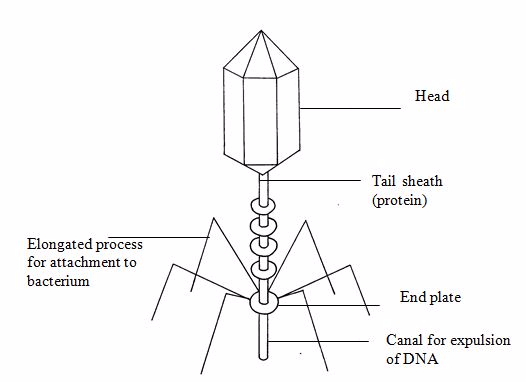
Viruses are used in developing vaccines, for example, vaccines for measles, polio and rubella are made from viruses that have been attenuated (weakened).
Viruses are used as biological weapons to kill organisms.
They are used as vectors in genetic engineering to transfer genes from one organism to another for improving or treating the defective genes.
Bacteriophages are viruses that attack bacteria and hence they help in controlling infections and diseases.
Viruses are used as biological weapons in wars and in biological pest control.
- Most viruses cause diseases to both plants and animals. Plant disease such tomato mosaic, cassava mosaic and tobacco mosaic; and animal diseases e.g. measles, small pox, poliomyelitis and yellow fever are caused by viruses.
Others can withstand very low temperatures.
CLASSIFICATION OF LIVING THINGS
They are mainly unicellular and very small.
They are all prokaryotic (nucleus not bound by membrane)
They reproduce by binary fission.
Some members of the kingdom are autotrophs while others are heterotrophs
They have cell wall made up of protein material and sometimes lipids.
CLASSIFICATION OF LIVING THINGS
Some bacteria form spores during adverse conditions i.e. extreme conditions e.g. high or low temperatures, drought etc. The spores allow them to survive as they have very thick resistant walls.
Some are aerobes while others are anaerobes.
The genetic material (DNA) is scattered in the cytoplasm and they lack internal membrane bound organelles such as mitochondria, chloroplasts, golgi bodies etc.
Bacteria have strong and rigid cell walls due to the presence of murein. The wall prevents the cell from bursting when it absorbs much water (as a result of osmosis).
Bacterial cells are bounded by partially permeable membranes.
Bacteria possess capsules which are slimy or gummy.They have flagella which aid motility of the bacteria.
Motile bacteria can move in response to a certain stimulus i.e. tactic movement. Flagella can easily be seen by
electron microscope.
CLASSIFICATION OF LIVING THINGS
They have small self replicating circle of extra DNA called a plasmid.
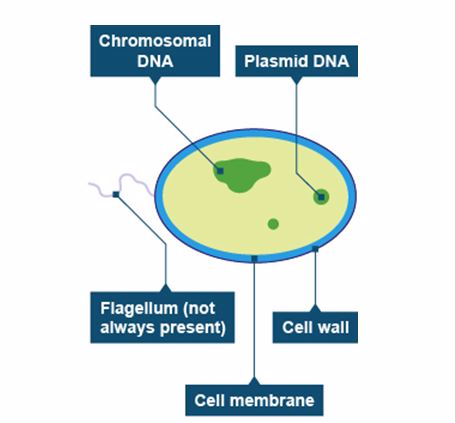
They are spherical in shape and can be of the following types.
CLASSIFICATION OF LIVING THINGS
Micrococcus – exist singly. They cause sore throat.
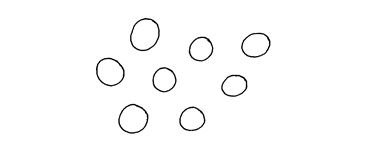
Diplococci – this type of bacteria exist in pairs. The pneumococci (Diplococcus pneumoniae) are the only members. They cause pneumonia.

Streptococci – this type of bacteria stick together and form a chain.
CLASSIFICATION OF LIVING THINGS
Most of them infect upper respiratory surface and cause diseases e.g. sore throat.

Staphylococci – These bacteria form a grape like bunch. They cause boils, pneumonia, food poisoning and other diseases.
CLASSIFICATION OF LIVING THINGS
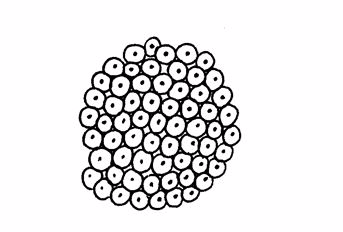
Single rods, for example, Escherichia coli commonly living in the gut and Salmonella typhi which cause typhoid fever.

CLASSIFICATION OF LIVING THINGS
Rods in chain, for example, Azotobacter, a nitrogen-fixing bacteria, and Bacillus anthracis which cause the disease anthrax.

Bacilli with endospores showing various positions, shapes and sizes of spores. They can be:
Central, not swollen e.g. Bacillus anthracis causes anthrax
Spherical spore, terminal swollen e.g. Clostridium tetani causes tetanus
CLASSIFICATION OF LIVING THINGS
Sub-terminal, swollen e.g. Clostridium botulism causes botulism.Spores may also be central
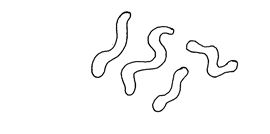
These are comma shaped bacteria, for example Vibrio cholerae.
CLASSIFICATION OF LIVING THINGS
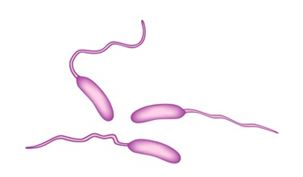
Nitrogen fixation:Plants
cannot trap nitrogen from the atmosphere but bacteria can fix nitrogen and change it into nitrogenous compounds.
The phenomenon is called nitrogen fixation.
The bacteria, which fix atmospheric nitrogen, are called nitrogen-fixing bacteria.
CLASSIFICATION OF LIVING THINGS
Some of the nitrogen fixing bacteria are found freely in soil are called free-living bacteria, eg. Clostridium and Azotobacter.
Some of them are found in root nodules making association with leguminous plants called symbiotic bacteria, eg. Rhizobium.
Nitrification:Some bacteria convert ammonium compounds into nitrates in the soil.
The process is called nitrification. The bacteria that take part in this process are called nitrifying bacteria, eg. Nitrobacter and Nitrosomonas.
CLASSIFICATION OF LIVING THINGS
Nitrosomonas Nitrobacter Ammonia—————>Nitrites————->Nitrates
Ammonification:Some
bacteria utilize proteins of dead bodies and convert it into amino
acids.
These amino acids are converted into ammonia by some bacteria.
The process is called ammonification and the bacteria involve in the process are called ammonifying bacteria.
CLASSIFICATION OF LIVING THINGS
Then the ammonia reacts with CO2 and H2O and gives ammonium carbonate which is absorbed by plants.
Bacteria decompose dead bodies. They convert complex organic compounds into simple inorganic compounds. Therefore they’re called natural scavengers.
Bacteria make the milk sour and produce flavor. They are responsible for coagulation of milk. E.g. Lacto bacillus.
Bacteria convert sugary substances into alcohol, acids, acetones; etc the process is called fermentation.
Bacteria also help to produce different types of enzymes like Amylase secreted from Bacillus, Protease from Bacillus, Streptokinase from Streptomyces.
Bacteria are useful for vitamin production like Vitamin B (Cabalmin) is secreted from Pseudomonas, Vitamin B (Riboflavin) is secreted from Clostridium.
They are important for antibiotic production like Terramycin from Streptomyces rimosus, Streptomycin from S. griseus, Neomycin from S. fradiae.
They are also important to produce hydrogen commercially. During the process they ferment carbohydrate and hydrogen gas is produced.
Bacteria decompose waste products.
Some of the species cause food poisoning. They secret some toxic chemical substances on out food stuff which cause food poisoning, eg Staphylococcus and Clostridium.
Some are responsible for human
diseases: Cholera: Vibrio cholera, Pneumonia: Staphylococcus pneumoniae, Diarrohea: Escherechia coli, Tuberclosis: Mycobacterium tuberclosis Leprosy: M. leprae, Meningitis: Nisseria meningitides.
Some bacteria are responsible for plant diseases. Red stripe in sugarcane, Leaf streak in rice, black rot in cabbage and yellow rot in wheat are caused by Xanthomonas and Pseudomonas.
CLASSIFICATION OF LIVING THINGS
Although most bacteria are harmless or often beneficial, several are pathogenic.
CLASSIFICATION OF LIVING THINGS
diseases, such as pneumonia, which can be caused by bacteria such asStreptococcusandPseudomonas, and foodborne illnesses, which can be caused by bacteria such asShigella, Campylobacter, andSalmonella.
CLASSIFICATION OF LIVING THINGS
fever, diphtheria, syphilis, and leprosy.
those that do not cause disease, harm or death to another organism and is usually used to describe bacteria.
CLASSIFICATION OF LIVING THINGS
Some of these same nonpathogenic microorganisms have the potential of causing disease, or being pathogenic if they enter the body, multiply and cause symptoms of infection.
CLASSIFICATION OF LIVING THINGS
This Kingdom comprises of unicellular and simple multicellular organisms whose cells have organized nucleus and membrane bound organelles.
CLASSIFICATION OF LIVING THINGS
Some are autotrophs, for example Euglena while others are multicellular.
They are all eukaryotes with most of them having locomotery structure.
CLASSIFICATION OF LIVING THINGS
Most of them live in moist places or in water.
Most are unicellular eukaryotes
They reproduce by binary fission
Euglenophyta e.g. Euglena
Rhizopodia e.g. Amoeba
Zoomastigma e.g. Trypanosoma
Apicomplexa e.g. Plasmodium
Oomycota e.g. White root
CLASSIFICATION OF LIVING THINGS
Chlorophyta e.g. Spyrogyra
Cilliaphora e.g. Paramecium
Rhodophyta e.g. Red algae
They are eukaryotes
Unicellular
Parasitic
They move using pseudopodia
CLASSIFICATION OF LIVING THINGS
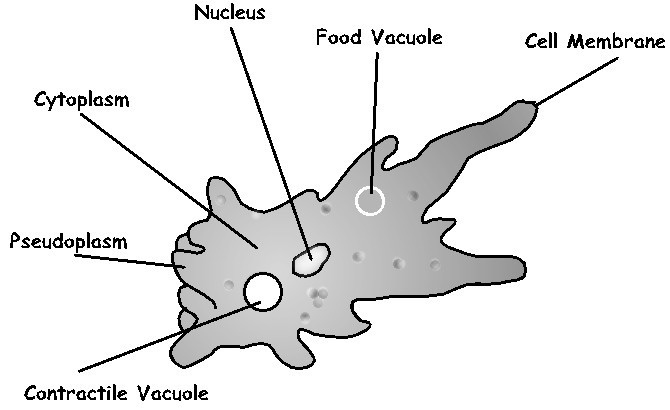
CLASSIFICATION OF LIVING THINGS
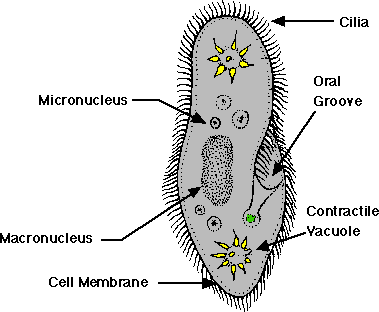
The Advantages and Disadvantages of Amoeba, Euglena Paramecium and Plasmodiu
CLASSIFICATION OF LIVING THINGS
Advantages of Paramecium: Are eaten by small water animals
Disadvantages of Paramecium: Causes diseases of bulanterdium eoli destroying the lining of intestines
Osmoregulation: Paramecium
has two contractile vacuoles and each is associated with permanent system of collecting channels, which empty, into the main vacuole.
Feeding: Paramecium feed on bacteria. These are obtained from the surrounding water by the beating of the cilia-lining o the oral grove.
Reproduction: Paramecium reproduces both asexually and sexually.
The asexual method is more common and it is binary fission. Sexual method is called conjugation.








This postis so much better than my buddy Chriss blog. He really doesnt know what hes writing about.
Hey! It is like you read my mind! You seem to know so much about this, like you wrote the book in it or something. I think that you could do with some pics to drive the message home a bit, but other than that, this is good blog. A wonderful read. I will certainly be back.
Hello 🙂 nice information, many thanks to the author. it is incomprehensible to me now, but in general, the usefulness and significance is overwhelming. thanks again and good luck!
My sister bookmarked this internet site for me and I have been going through it for the past several hrs. This is really going to help me and my classmates for our class project. By the way, I like the way you write.
Please let me know if you’re looking for a article writer for your weblog. You have some really great articles and I feel I would be a good asset. If you ever want to take some of the load off, I’d really like to write some material for your blog in exchange for a link back to mine. Thanks!
So what is the magic mix? Well I am going to provide game away at my so next seminar on E-Mail Marketing but here is a sneak preview of the weather that Ive discovered have a massive impact on results
The post continually contain lots of updated details. Exactly where do you come up with this? Just saying you are very uplifting. Thank you
Took me time to learn all of the comments, however I actually enjoyed the article. It proved to be very helpful to me and Im certain to all of the commenters right here! It is all the time nice when you cant only be informed, but in addition engaged! Im positive you had joy writing this article. Anyway, in my language, there will not be much good source like this.
When I look at your RSS feed it gives me a bunch of weird text, is the problem on my side?
ive begun to visit this cool site a couple of times now and i have to tell you that i find it quite nice actually. itll be nice to read more in the future! =p
Definitely, what a great blog and instructive posts, I will bookmark your site.Best Regards!
Usefull facts made on your blog, most I agree with. Remember viewing a similar blog which I will try to post. Definately will bookmark ofcourse I await your next insightful blog post
Can you message me with a few tips on how you made your blog site look this awesome, Id appreciate it.
Hello Is it okay if I go sort of away from the topic? Im tryin to read your post from my brand new Macbook although it wont show correctly (a few of the buttons are pretty much missing), any suggestions? Shall I try to find an fix for my browser or something? Thank you for the help I hope! Have you considered promoting your blog? add it to SEO Directory right now 🙂
Jack was the king, Stan was the prince, together they were my ersatz parents. Excelsior!
I take delight in reading what you had to express, You have an remarkable knowledge on the subject informationa nd I look forward to examing more of what you have to say. I will pay attention and bookmark your post and come back to your internet site when an update is posted.
as I website possessor I conceive the content material here is very wonderful, appreciate it for your efforts.
Very good suggestions, you just gained a brand new reader. Im curious if you have any follow ups to this post?
You must know, your post goes to the center in the issue. Your clearness leaves me wanting to know a lot more. merely so you know, i will instantly grab your feed to keep up to date with your website. Sounding Out thanks is purely my little way of saying bravo for a wonderful resource. Accept my nicest wishes for your inflowing article.
Thanks for your marvelous posting! I certainly enjoyed reading it, you might be a great author.I will make certain to bookmark your blog and will eventually come back down the road. I want to encourage you to ultimately continue your great job, have a nice afternoon!
Hello! My buddy told me something like fotokopi toneri or toner or maybe kartu, do you know what does it mean? Laters!
There are some attention-grabbing deadlines on this article but I don’t know if I see all of them middle to heart. There may be some validity however Ill take hold opinion till I look into it further. Good article , thanks and we would like extra! Added to FeedBurner as nicely